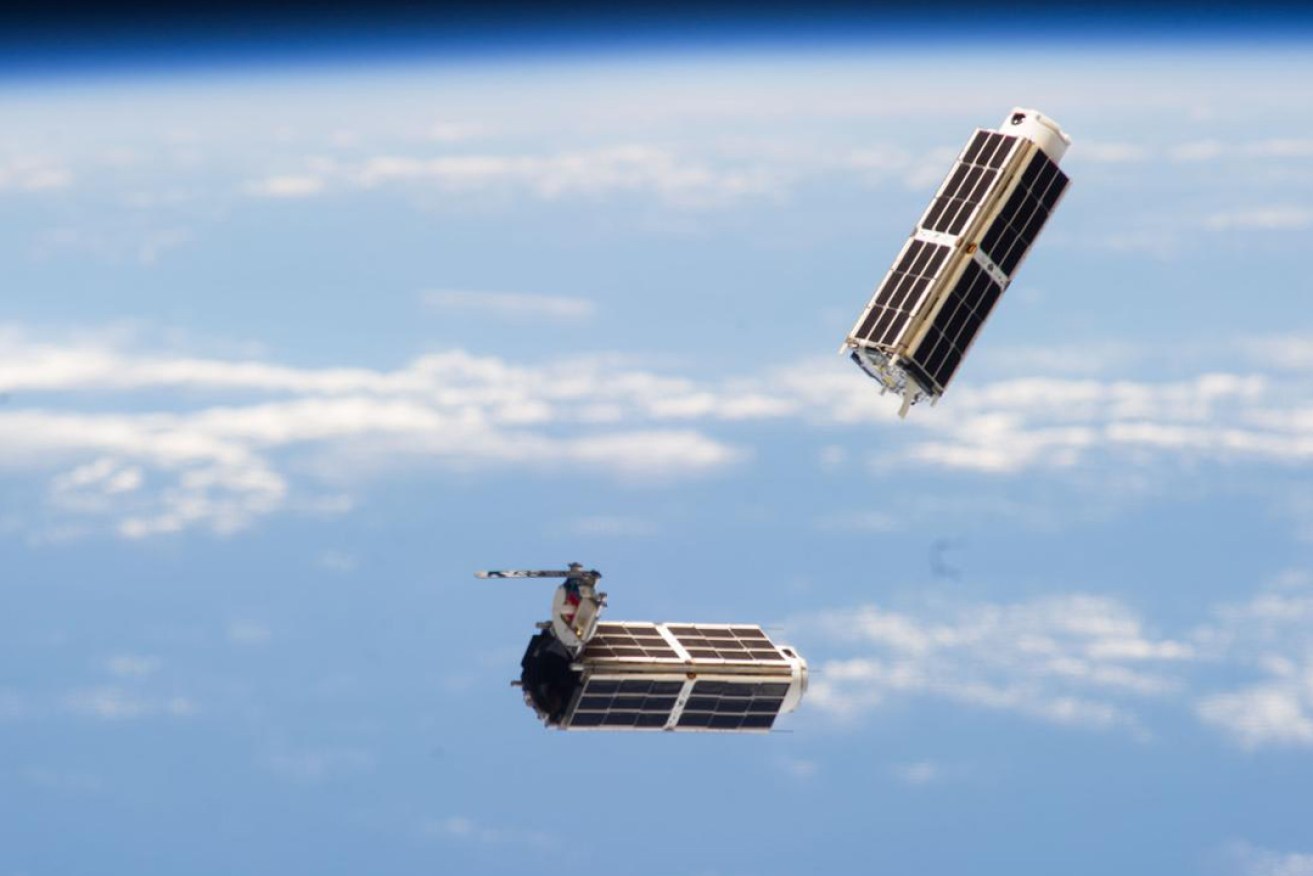Why Australia needs to stand on its own in space
Brexit and the China/US trade war are prime examples of why Australia needs to develop its own sovereign space capabilities, says Australia’s SmartSat CRC CEO-designate Professor Andy Koronios ahead of today’s 8th Space Forum in Adelaide.

A set of NanoRacks CubeSats shortly after deployment in 2014. Picture courtesy NASA.
Recent global events point to a more uncertain and unpredictable world and illustrate the importance of having a sovereign technological capability, especially in defence and national security.
For example, a no-deal Brexit could see the UK cut its umbilical cord from the EU, and this, in turn, may shut them out from the space work in which they are currently involved in and for which they have paid.
This includes programs like the Global Navigation Satellite System project Galileo, which provides GPS type positioning and navigation services or Copernicus, which provides global, continuous, autonomous, high quality, wide-range Earth observation capability.
By developing our own capabilities, Australia will not only protect its national security from unforeseeable future events like Brexit but also improve the economic outlook in a range of important industries.
When people talk about Industry 4.0 you cannot achieve much of that without some space-mediated technology. That’s why we have to provide and help build an Australian sovereign capability in that area. At the moment, we are just simply buying external products and earth observation services but we need to control our own satellite applications, especially in agriculture.
We collaborate very well on crop yields with the Chinese Academy of Science. The Chinese have so much advanced modelling and, of course, they’ve got their own satellites and they can actually have a very good understanding of our crop yields. They give us that information but we receive it late: they use it first and then give it to us.
This means Australian agriculture relies on estimated yields from mobile ground inspectors for future trading, which isn’t as accurate as satellite information. This gives the Chinese an advantage in future price negotiations because they know more about our yields than our farmers know and that’s not a good thing.
Another reason to develop Australian technologies is to ensure the country is not bound by other nations on price or access. If we don’t develop the science ourselves we are beholden to what prices the provider puts on us accessing that technology. This also means that you never get your own capability built so over time you become dumber and dumber and more reliant on the technologies of others.
For example, if someone sells us a satellite technology, say, at 15 per cent profit and, let’s say, another 10 per cent goes towards R&D to improve the next generation of their satellites, this means we are paying an extra 25 per cent for them to become smarter than us. That’s dumb.
It’s the same argument for people questioning why the Americans want to go back to the Moon.
People ask “why are you going to the moon? Fix the problems here.” But by going to the Moon, you are getting the know-how and building that technology that you can actually apply on Earth and make our lives easier, healthier and more comfortable.
The SmartSat CRC will tackle these sovereignty issues by bringing together experts in advanced satellite technologies around communications and IoT connectivity, sensors and intelligence, and next-generation Earth observation data services.
Five advisory boards have now been established and will begin satellite technology projects by January 2020 in the specific areas of defence, mining, agriculture, logistics and transport, and telecommunications. These are among the biggest industries that we have in Australia.
Our end-user advisory group on transport and logistics will be very critical as we are a very big country and therefore we need to ensure that our logistics and transportation systems are enabled by satellite technologies. The telecommunications advisory group will tell us how we can best augment the terrestrial communication systems so that when you leave Adelaide and you go 500km north, you still have seamless mobile connectivity.
These groups will tell us what is the best research for us to do that has the biggest impact for our society and our industry. This integrated capability will allow industries and other countries needing solutions to problems to look to the SmartSat CRC for expertise in Australia.
The CRC has grown to include 100 different organisations that have invested more than $190 million that, together with $55 million in Australian Federal Government funding, represents a $245 million research effort over seven years.
We are a coalition of the best universities, research organisations and industry with space capability in Australia.
That means that we can become a one-stop-shop for collaboration with other countries. Our mission is to become one of the space R&D powerhouses in the region.
Professor Koronios and the SmartSat CRC will help host nearly 900 space leaders, entrepreneurs, researchers and students at the 8th Space Forum and the 19th Australia Space Research Conference at the Adelaide Convention Centre from September 30 to October 2.
Want to comment?
Send us an email, making it clear which story you’re commenting on and including your full name (required for publication) and phone number (only for verification purposes). Please put “Reader views” in the subject.
We’ll publish the best comments in a regular “Reader Views” post. Your comments can be brief, or we can accept up to 350 words, or thereabouts.
InDaily has changed the way we receive comments. Go here for an explanation.




